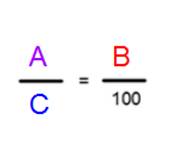Perhaps the most important property you’ll learn in Algebra 1 is the zero property.
It says that if a · b = 0, then either a = 0 or b = 0 (or both).
This property allows us to solve most of the equations we encounter in algebra and beyond. First, move everything to one side of the equation (so the other side equals 0). Second, factor the equation. Then we can set each factor equal to zero and solve.
You will use this technique (on more and more complicated equations) in every math class you take.
Example: Solve x2 = 3x.
Solution:
|
x2 – 3x = 0 |
(Move everything to one side.) |
|
x(x-3) = 0 |
(Factor.) |
|
x = 0 or x-3 = 0 |
(Set each factor equal to 0.) |
|
x = 0 or x = 3 |
(Solve each factor.) |





